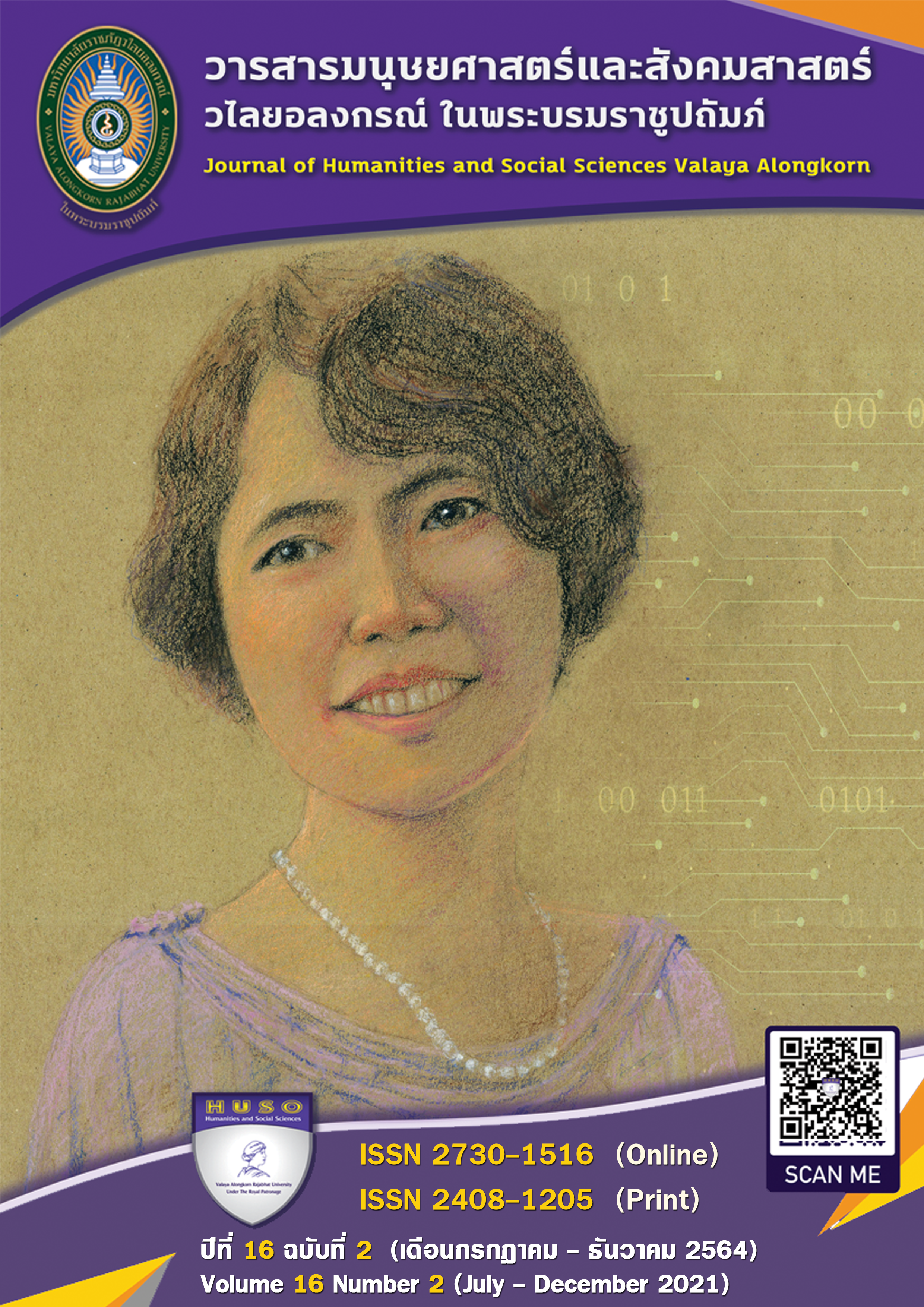EMPOWERMENT MANAGEMENT A CASE STUDY BANGANG ENTERPRISE BANGANE SUBTRICTRIC SAKAOE DISTRIC SAKAOE PROVIOCE.
Main Article Content
Abstract
The objectives of the current research study were to; explore and develop activities for managing community empowerment employing processes of developing professional-group potential to become a community enterprise as well as investigate the effects of activities in the processes of managing community empowerment by developing professional-group potential to become a community enterprise, Bankaeng, Muang, Sa Kaeo. The Participatory Action Research (PAR) was employed in the current study. The data gathered was related to working context of the professional group. The research techniques included analyzing working conditions, obstacles and needs of the professional group emphasizing the group’s participation. This was aimed to encourage their working cooperation. The information obtained was analyzed to explore appropriate activities in order to initiate processes for managing community empowerment with developing professional-group potential to become a community enterprise. Other techniques were a community forum and AIC technique then the data was analyzed and planned participatorily for the ultimate goal of collective impact. The research findings were found that, first of all, two activities were required. The first activity was a workshop for participatory analysis. Due to the workshop, the techniques employed were Geo-social mapping, income-and-expense account of the professional group, namely Ong Chee Wit, community calendar analyzing with the representative of profession-group, working-context analysis of the professional-group including workshop for designing a potential developing plan of the professional-group. All techniques mentioned were aimed to obtain collective impact. The second activity was a training for cultivating knowledge about professional-group development and community enterprise such as registration processes, doing accounting for community enterprise, community enterprise’s rules and regulations as well as generating leadership for operating professional group and community enterprise. The second findings about the effects of activities in the processes of managing community empowerment by developing professional-group potential to become a community enterprise were as follows: (1) Guidelines for elevating the professional group to become a community enterprise included;1. relevant members, such as the head and group member, should participatorily define accurate goals, 2. cooperative operation among the head, group member and network, should be acted in forms of exchanging opinion, reflecting the results and providing knowledge and training, 3. empowering among the member should be practiced in aspects of passing on the latest knowledge and skills, providing field trip, 4. communication is always important and should be acted through LINE Application or annual meeting as well as 5. government sections should be emphasized for requiring any essential knowledge. (2) To develop the guidelines for elevating local products to the Community Product Standard, it comprised product analysis, license request, product improvement, market exploration and product development. (3) It needed to develop the distribution channel, in form of online market, for local products and increase the household income. (4) The professional group learnt about the main points for developing their products and joint hands to improving local products, for instance the community chose bamboo shoot as their main product and fermented it stressing on cleanliness. In addition, Products would manufacture depending on customers’ need. Moreover, all network, including Bankaeng Subdistrict Administrative Organization, Community Development Office, Sa Kaeo, District Agriculture Office and Valaya Alongkorn Rajabhat University, participated in developing their key products.
Article Details
ลิขสิทธิ์บทความวิจัยที่ได้รับการตีพิมพ์เผยแพร่ในวารสารมนุษยศาสตร์และสังคมศาสตร์ วไลยอลงกรณ์ ในพระบรมราชูปถัมภ์ ถือเป็นกรรมสิทธิ์ของคณะมนุษยศาสตร์และสังคมศาสตร์ มหาวิทยาลัยราชภัฏวไลยอลงกรณ์ ในพระบรมราชูปถัมภ์ ห้ามนำข้อความทั้งหมดหรือบางส่วนไปพิมพ์ซ้ำ เว้นแต่จะได้รับอนุญาตจากมหาวิทยาลัยเป็นลายลักษณ์อักษร
ความรับผิดชอบ เนื้อหาต้นฉบับที่ปรากฏในวารสารมนุษยศาสตร์และสังคมศาสตร์ วไลยอลงกรณ์ ในพระบรมราชูปถัมภ์ เป็นความรับผิดชอบของผู้นิพนธ์บทความหรือผู้เขียนเอง ทั้งนี้ไม่รวมความผิดพลาดอันเกิดจากเทคนิคการพิมพ์
References
จุฑาทิพย์ ภัทราวาท. (2553). คู่มือการวิจัยเชิงปฏิบัติการแบบมีส่วนร่วม. กรุงเทพฯ. พิมพ์ที่โรงพิมพ์มหาวิทยาลัยธุรกิจบัณฑิตย์.
ราชกิจานุเษกษา. (2548). พระราชบัญญัติส่งเสริมวิสาหกิจชุมชน พ.ศ.2548. เล่มที่ 122 ตอนที่ 6 ก. หน้าที่ 1 วันที่ 18 มกราคม 2548.
บุญร่วม เทียมจันทร์ และคณะ. (2560). รัฐธรรมนูญแห่งราชอาณาจักรไทย พุทธศักราช 2560. กรุงเทพ: อินส์พัล.
สรรเสริญ วงศ์ชอุ่ม. (2554). การวางแผนพัฒนาประเทศ. กรุงเทพฯ: ศูนย์การพิมพ์เพชรรุ่ง จำกัด.สิทธิณัฐ ประพุทธนิติสาร. (2545). การวิจัยเชิงปฏิบัติการแบบมีส่วนร่วม : แนวคิดและแนวปฏิบัติ. เชียงใหม่. พิมพ์ที่วนิดา เพรส.
สุนทร คุณชัยมัง .2554. Collective Impact: CI. กรุงเทพฯ. บริษัทอิมเมสพลัส คอมมิวนิเคชั่ย จำกัด.
อมาวสี อัมพันศิริรัตน์และคณะ, 2560. การวิจัยเชิงปฏิบัติการแบบมีส่วนร่วม : ลักษณะสําคัญและการ ประยุกต์ใช้. วารสารมนุษย์ศาสตร์และสังคมศาสตร์ ปีที่ 36 ฉบับที่ 6 พฤศจิกายน-ธันวาคม 2560.

